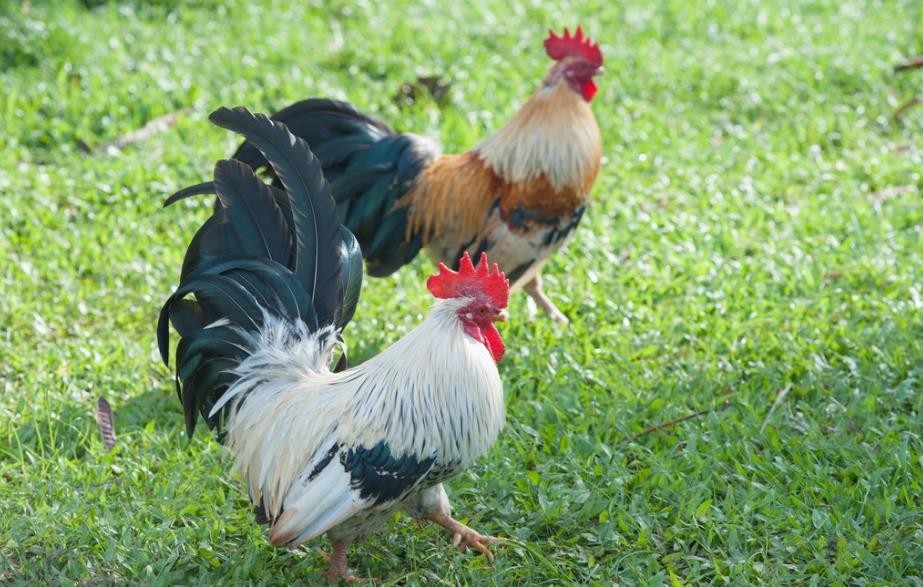
News briefing: Chicken infectivity

News briefing: Chicken infectivity
Infectious bursal disease (IBD) is an acute and highly contagious infectious disease of chickens caused by infectious bursal disease virus (IBV) . It is characterized by sudden onset, Short Course of disease, high incidence, damaged Bursa of fabricius and suppressed immune function. Oie classified it as a class B epidemic. Infectious bursal disease (IBD) mainly affects chickens aged from 3 to 6 weeks, and the incidence of ibd in chickens less than 2 weeks old is very low. In addition to causing the death of some chickens, the disease often causes the immune suppression of cured chickens, leading to vaccination failure, increasing the susceptibility of chickens to Newcastle disease and many other diseases.
1. Epidemic characteristic, the sick chicken excrement contains the massive virus, the sick chicken is the main infectious source. Chickens can be transmitted indirectly through direct contact and contamination of feed, water, bedding, dust, utensils, vehicles, people, clothing, and rats and beetles. Vector insects may be involved in the transmission of this disease. The virus can be transmitted not only through the alimentary and respiratory tract but also through contaminated eggshells, but there is no evidence of egg-to-egg transmission. In addition, through the eye conjunctiva can also be transmitted. The disease generally high incidence (up to 100%) and low mortality (mostly about 5% , up to 20% ~ 30%) , poor sanitation and accompanied by other diseases mortality can rise to more than 40% , even up to 80% in chicks.
2. Clinical symptoms
(1) chicken with mental atrophy, loss of appetite, shrinking neck, neck hair erect, dysentery, collapse and die.
(2) the chickens died 1 ~ 2 days after the outbreak, and the death rate reached the Z peak on 4 ~ 7 days, after which the chickens gradually returned to normal.
(3) the incidence rate can reach 100% , the mortality rate is about 20% ~ 30% , but also 50% ~ 60% . The incubation period of the disease was 2 ~ 3 days, and the disease course was about 1 week. The death curve of the infected chickens was peak. One of the early symptoms of a flock of diseased chickens is that some have pecked their own anus, followed by diarrhea, white sticky or watery stools. With the course of the disease, appetite gradually disappeared, neck and body tremor, sick chicken gait instability, fluffy feathers, listlessness, lying on the ground, body temperature rise, around the CLOACA feathers were fecal pollution. At this time the disease chicken dehydration is serious, claw dry, eye socket depression, Z after exhaustion death. The chickens with acute disease could die after 1 ~ 2 days of symptom onset, and the death peak was reached at 3 ~ 5 days after symptom onset, and then gradually decreased. In the first incidence of chicken farms more dominant infection, typical symptoms, high mortality. In the future, the disease will be transferred to subclinical type. In recent years, it has been found that some of the type I variants are subclinical and have low mortality, but their immunosuppression is severe. The incubation period is from 1 to 3 days and the terrestrial animal health code provides for 7 days.
(4) sudden onset of disease, chicken wilt, sleep, the onset of white water-like feces, green feces discharge recovery period.
3. Anatomical changes
(1) the dead chicken showed severe dehydration.
(2) Large bleeding spots or blood clots could be seen in the leg muscles and chest muscles. Bursa of Fabricius is big, fester, haemorrhage sometimes.
(3) kidney enlargement and uric acid deposition.
(4) the Mucosa at the junction of the glandular stomach and the muscular stomach sometimes bleeds. (5) due to the rapid onset of disease, after 3 to 4 days of high death, the rapid return to normal. The Bursa of Fabricius is enlarged, suppurated, bleeding, and atrophied. The above symptoms can be diagnosed as this disease. A healthy flock of chickens suddenly becomes ill and becomes seriously ill. Within two or three days, 60-90% of the chickens will become ill, their spirits will become highly depressed, their heads will shrink, their eyes will be closed, they will fall asleep on the ground, their neck feathers will stand up, their food intake will be greatly reduced, their drinking water will increase, and white water samples will be drained thin, the feather around anus is stained with excrement, a few diseased chickens turn around to peck their anus, a few diseased chickens head, neck, body tremor phenomenon. Death usually begins on the third day of onset and ceases on 7-8 days, with rapid resolution of symptoms.
4. Prevention and treatment
The disease has no effective control drugs, vaccination, passive immunization is the main way to control the disease, at the same time, must strengthen the feeding management and epidemic prevention and disinfection health work. The broiler chicks were immunized once with oil adjuvant inactivated vaccine at 40-42 weeks of age, and the chicks drank water from the attenuated vaccine at 12-14 days of age and from the moderately virulent vaccine at 24-26 days. In addition, immunization of chickens with complex or unknown sources can be appropriately advanced, and chickens in highly contaminated areas or areas with high incidence of the disease can be directly selected for moderate virulence vaccines. Highly immunized egg yolks or high immunized Sera are injected into severely threatened infected or diseased chickens.
Date of opening:1970-01-01 Shop address: Main products: Store certification time:1970-01-01 08:00:00
Store Name: Principal: Contact number: email: